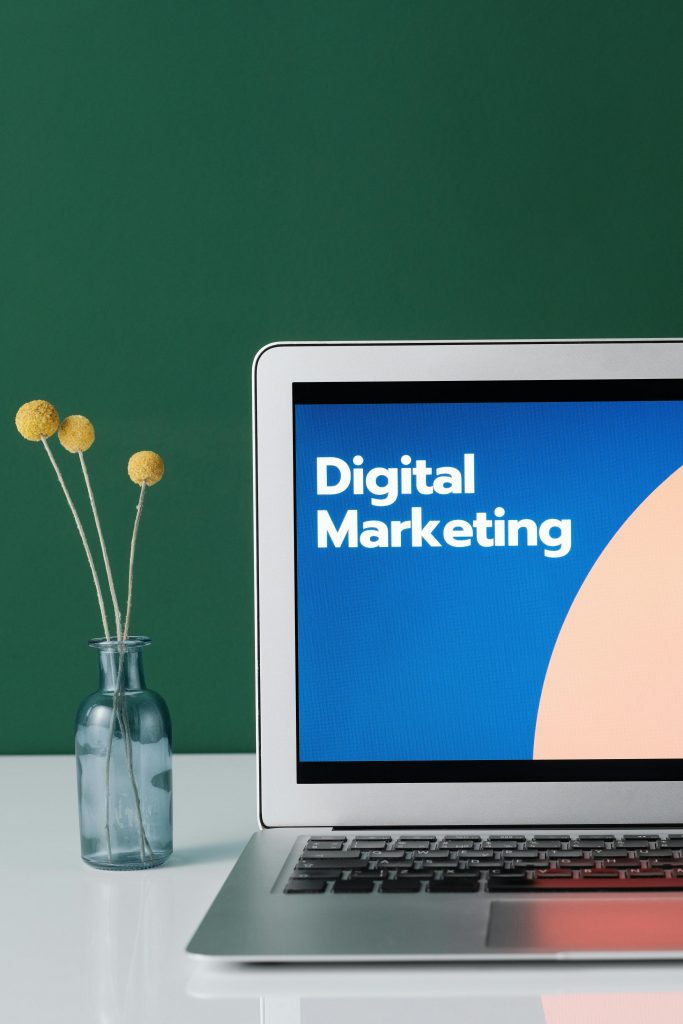BEST c Before we jump into the list, let’s pause and reflect on why reading blogs is worthwhile in digital marketing:
DIGITAL MARKETING IN INDIADIGITAL MARKETING IN INDIADIGITAL MARKETING IN INDIADIGITAL MARKETING IN INDIADIGITAL MARKETING IN INDIA
Up-to-date trends – The digital space evolves rapidly (algorithms, platforms, tools, consumer behaviours). Blogs help you keep up with what’s new, especially in the Indian context.
Case studies & real examples – Blogs often share what worked (and what didn’t) for Indian businesses & campaigns, which is more actionable.
Practical tactics – Rather than theory, many blogs provide how-to guides, step-by-step tips, checklists, tools to use.
Learning from the experts – Many Indian blogs are written by practitioners who have “been there” and bring local experience (budget constraints, regional languages, local consumer behaviour).
Cost-effective continuous learning – Blog reading is generally free or low-cost, and complements formal training or self-study.
DIGITAL MARKETING IN INDIA
Choose blogs that regularly publish (so content remains fresh).
Check for Indian context (campaigns, tools, platforms relevant for India).
Don’t just read; implement. Pick one idea, try it, track results.
Use RSS / email alerts / newsletters so you don’t miss posts.
Make notes of tactics, tools, links to follow up.
Evaluate & filter: Not every blog post will be high value; skim, pick what resonates with your business/goal.
Table of Contents
ToggleWhat Makes a “Best” Digital Marketing for india
Here are the criteria I use to pick and evaluate quality blogs:
Indian relevance: Covers Indian market, Indian brands, Indian platforms (or global platforms applied to Indian conditions).
Depth of content: Goes beyond surface–level tips (“post on Instagram”) to tactical / strategic depth (how, when, why).
Consistency: Regular updates, not gone stagnant.
Authority & credibility: Written by recognised practitioners, agencies, or thought leaders in India.
Actionability: Practical take-aways, tool recommendations, case studies.
Transparency: Where possible, blog shows data, results, what didn’t work.
Community/engagement: Comments, interaction, updates to old posts.
With that in mind, let’s dive into some of the very best blogs in India for digital marketing.
Digital Marketing Blogs in India
Here are some standout blogs you should follow (and why). I’ll give about 4–6 in detail so you can get deep value.
1. BEST DIGITAL MARKETING IN INDIA
Why it stands out:
Run by Deepak Kanakaraju, a well-known Indian digital marketer/trainer. BloggingX+1
Focuses on Indian digital marketing realities: SEO, content marketing, lead generation, Facebook/Google Ads, building a personal brand. Doindigital+2portalmap.com+2
Offers actionable guides and resources rather than just high-level commentary.
Good for both learners (career builders) and practitioners (marketers, agencies).
What you’ll find:
Posts on running campaigns, building digital funnels, case studies of Indian clients.
Insights into the full funnel: traffic → leads → conversions → retention.
Advice on personal branding in India, which is often overlooked but highly relevant here.
How to use it:
Subscribe to his newsletter so you don’t miss new posts.
Pick one post per week, implement at least one tactic (e.g., test a Facebook ad in your market).
Use his posts to build your “digital marketing checklist” — e.g., “Did I set up GA4 / track conversions?”
If you’re newer, his blog is a strong starting point to build foundational understanding.
2. DIGITAL MARKETING FOR INDIA
Why it stands out:
Founded by Harsh Agrawal in 2008, one of the pioneers for Indian blogging and digital marketing. Doindigital+1
Although it originally focused on blogging/affiliate marketing, it has since grown into broader digital marketing territory (SEO, content, monetization).
Especially good if you’re interested in how digital marketing combines with blogging, personal brand, affiliate income.
What you’ll find:
Tutorials on WordPress, blogging, traffic generation, SEO for Indian context.
Insights on monetization: how people are earning via blogs, digital products, affiliate marketing.
Tips for beginners and intermediate audience.
How to use it:
If you run or plan to start a blog or content hub, this is one of your go-to sources.
Use their posts to map out your blogging strategy (niche selection, content calendar, SEO).
Combine blog tactics with digital marketing tactics from other sources (e.g., paid ads) to build a full funnel.
3. DIGITAL MARKETING FOR INDIA
Why it stands out:
Focuses specifically on social media marketing in India: platforms, campaigns, influencer marketing, trends. FroggyAds.com+1
Good for keeping up with the fast-moving landscape of social platforms (Instagram, TikTok (historically), Reels, YouTube, etc) in the Indian market.
What you’ll find:
Case studies of Indian social media campaigns.
Insights on influencer marketing (one of the big growth areas in India).
Trend posts: what’s rising, what’s fading, how brands are doing social media differently in India.
How to use it:
If your business has a social media component (which most do), regularly check their updates.
Use case studies to get ideas: “What did brand X do with Reels in India? Can I adapt that?”
Keep an eye on changing algorithms, new features (e.g., Instagram Shops, live commerce in India) and plan early.
4. Digital Vidya Blog (digitalvidya.com/blog)
Why it stands out:
A prominent Indian digital marketing training company; their blog adds context, insights, and resources for Indian professionals. Search Engine Journal+1
Offers a blend of strategy, tactics, training insights — good for both learners and marketers.
What you’ll find:
Blogs on SEO, social media, analytics, digital strategy in India.
Possibly also content oriented toward certification, career building in Indian context.
How to use it:
If you are building a career (or hiring) in digital marketing in India, this blog can help you map the skill-framework.
Use it to identify gaps in your knowledge: e.g., “I know Facebook ads but not Google Analytics 4” → pick relevant posts.
Combine with other blogs above that perhaps emphasise more advanced or specialist tactics.
5. Social Beat Blog (socialbeat.in/blog)
Why it stands out:
Known as a high-quality digital marketing agency in India; their blog shares perspectives, case studies, and advanced tactics. BlogHeist+1
Covers funnel marketing, brand marketing, content marketing, multilingual marketing (which is especially important in India with many languages).
What you’ll find:
Case studies of Indian brands they’ve worked with.
Content strategy for Indian markets.
Advanced topics such as marketing automation, influencer integration, video strategy.
How to use it:
If you’re a business owner/practitioner and want to scale, this blog gives you more advanced thinking.
Borrow frameworks they use: e.g., “How we did influencer + micro-influencer + performance ad for a brand in India.”
Use their blog posts as discussion points with your team/agency: “Should we adopt this idea?”
How to Choose Which Blogs to Focus On
Given the many blogs out there, you’ll want to pick a manageable set to follow regularly (3-5 is reasonable). Here’s how to decide:
| Your focus | Recommended blog types | Example blogs |
|---|---|---|
| You’re a beginner, want to learn fundamentals | Blogs with broad topics, beginner-friendly language | ShoutMeLoud, Digital Deepak |
| You want social media + influencer tactics (India) | Blogs specialising in social platforms, campaigns | Social Samosa |
| You’re a marketer/agency scaling campaigns | Blogs with advanced tactics, case studies, Indian market context | Social Beat, Digital Vidya |
| You want a mix of blogging + monetisation + digital marketing | Blogs combining content strategy + digital channels | ShoutMeLoud, BloggersPassion (mentioned in lists) |
Tips for selecting:
Look at the recency of posts: a blog that hasn’t posted in 6-12 months may not be current.
Check the range of topics: does it cover SEO, paid ads, content, analytics, social? If too narrow, you may need to supplement.
See if there’s Indian context: examples from Indian brands, Indian platforms, India-specific advice (regulations, languages, budgets).
Subscribe to their newsletter – blogs that invest in newsletters are more likely to be active and professional.
Evaluate the writing style: Do you find it readable, actionable? If many posts are vague or only high-level, maybe skip.
How to Get the Most Out of the Blogs
Reading a blog is one thing; extracting value is another. Here are practical steps to turn blog reading into results.
Create a reading/curriculum plan
Pick 1 blog post per week from your chosen list.
Keep a simple tracker: Date, Blog, Post Title, Key Ideas, Action Items.
At end of month, review: what did you implement? What results did you see?
Extract action items
When you read a post, don’t just consume. Write down at least one action you will take.
Example: “On Social Samosa: brand X used 10 micro-influencers with UGC content → I will test 2 micro-influencers for my brand.”
Create tasks in your calendar/project management system (e.g., Trello/Notion) to actually do.
Adapt to your context
Indian marketing doesn’t always behave like US/Europe: budget constraints, local languages, regional platforms, mobile-first behaviour. Use blogs that include India context or adapt generic advice.
For example: If a post mentions “YouTube Shorts” in US context, think “Will this apply to Indian tier-2/3 audience?”
Track outcomes
If you implement tactics, track results (traffic, conversion, cost, ROI). Blogs often provide anecdotal results; you’ll want to benchmark your own.
Use Google Analytics, social analytics, ad platform dashboards. Over time you’ll build your own “what works in India for us” library.
Experiment & iterate
Digital marketing is about testing. Blogs tell you “what worked,” but your audience might be different. Try, measure, tweak.
Don’t just copy blindly; adapt the idea. For example, influencer marketing in India may need regional language influencers rather than national ones.
Join discussions/communities
Many top blogs have comment sections, newsletters, sometimes forums/social groups. Engage: ask questions, compare notes.
This helps you clarify doubts and stay motivated.
Bookmark & curate
When you find a great blog post, bookmark it and tag it (e.g., “influencer tactics”, “SEO India”, “content calendar”). Over time you’ll build a personal library of go-to posts.
You might even create your own “Best Tactics Taken From Blogs” folder for your team.
Current Trends in Indian Digital Marketing to Watch (with Blog Links)
Reading blogs also helps you stay ahead of new trends. Based on the Indian context and blog coverage, here are some hot topics for 2024–25 and beyond:
A. Video & short-form content
Platforms like YouTube Shorts, Instagram Reels, and Indian equivalents are growing. Blogs like Social Samosa highlight how Indian brands are leveraging them.
Action: From a blog post, pick one short-form idea, create 3 videos, test for engagement in your target market.
B. Regional language marketing
India has 1,000+ languages; many users prefer content in regional languages. Blogs such as Social Beat emphasise multilingual marketing. portalmap.com+1
Action: Identify one regional language relevant to your audience; translate or create content; test response vs English.
C. Influencer & creator economy
With influencer marketing growing, blogs focusing on Indian influencer strategies (selection, micro vs macro, ROI) are valuable. Social Samosa covers this well.
Action: From a blog case study: map out influencer tiers for your niche; calculate expected engagement + cost; test one.
D. Performance vs brand balance
In India’s market, you often need to balance short-term performance (ads, conversions) with longer-term brand building (content, loyalty). Blogs like Digital Vidya and Social Beat discuss funnels and marketing automation.
Action: Review your current strategy: what % of budget is performance vs brand? Based on blog insights, adjust to test new balance.
E. Analytics & data-driven marketing
The more mature Indian market expects proper measurement, not just “likes”. Blogs emphasize using tools (Google Analytics 4, event-tracking, conversion modelling) for Indian businesses.
Action: Pick one blog post on analytics; audit your tracking; implement one missing measurement (e.g., micro-conversion) and report.
F. AI & automation in digital marketing
While more global, Indian blogs are increasingly discussing AI tools, automation for content/personalisation, and local adaptation.
Action: Read a blog post on the topic; choose one small automation you could implement (e.g., email sequence triggered by behaviour in India); test.
Common Mistakes & How Blogs Help Avoid Them
Reading the right blogs also helps you avoid typical mistakes many Indian marketers/businesses make:
Mistake: Copying international tactics blindly (what works in US may not work in India due to audience/behaviour).
Blog help: Indian-context blogs highlight modifications needed.Mistake: Focusing only on one channel (e.g., only Facebook/Instagram) without full funnel or analytics.
Blog help: Many posts emphasise multi-channel, full-funnel approach.Mistake: Not tracking or optimising properly, relying only on vanity metrics (likes, followers).
Blog help: Posts that focus on conversion, ROI, not just reach.Mistake: Neglecting content, thinking “ads will solve it”.
Blog help: Shows content + ads + strategy synergy.Mistake: Thinking digital marketing is “free” or “easy”. Many blogs emphasise effort, consistency, strategic mindset.
Mistake: Ignoring ongoing learning. Digital marketing evolves; blogs encourage continuous update and adaptation.
How to Build Your Personal “Blog Learning System”
Here’s a suggested framework to convert blog-reading into a system:
Set aside time: e.g., 30 minutes twice a week (or 1 hour every week) to read a selected blog post.
Select posts in advance: At the start of a month, pick 4 posts (one per week) across different blogs (for variety).
Create an “Implementation” column: For each post note: What will I implement this week?
Execute: Assign the task, complete it, record results.
Reflect & Learn: After the week/month, review: Did this put new traffic/leads? What changed? What would I do differently?
Archive & Tag: Keep a “library” of blog posts you found valuable. Tag them (SEO, content, social, regional language, analytics).
Share & Discuss: If you’re in a team, share interesting blog posts with your team. Use it as discussion starters (“How can we apply this tactic?”)
Update older posts: Blogs sometimes have older posts; revisit them after 6-12 months: are they still relevant? Has the tactic changed?
Connect with the blogger community: Subscribe to comments, newsletters; sometimes blog authors do webinars or Q&A. This keeps you connected and motivated.
Recommended Blog Reading Schedule for the First 3 Months
Here’s a template for how you might approach the first three months:
| Month | Week | Blog + Topic | Action Item |
|---|---|---|---|
| Month 1 | Week 1 | Digital Deepak – Funnel Marketing Basics | Map your current funnel; identify leak points. |
| Week 2 | ShoutMeLoud – Blogging + SEO for Indian Audience | If you have a blog, audit your content SEO; apply one fix. | |
| Week 3 | Social Samosa – Influencer Marketing in India | Identify 2 micro-influencers for your niche; estimate cost/return. | |
| Week 4 | Digital Vidya – Analytics Tracking for Indian Businesses | Audit your Google Analytics/GA4 setup; implement one missing event. | |
| Month 2 | Week 5 | Social Beat – Multilingual Content Marketing | Consider one regional language variant of your key content. |
| Week 6 | Digital Deepak – Paid Advertising Strategy (FB/Google) | Review your ad spend/methodology; test new ad format. | |
| Week 7 | ShoutMeLoud – Affiliate Monetisation / Content Strategy | If relevant, identify one affiliate partner or strategy. | |
| Week 8 | Social Samosa – Social Trends (Short-Form Video) | Create & test one short-form video; track engagement vs older content. | |
| Month 3 | Week 9 | Digital Vidya – Automation & Email Marketing | Set up one email nurture sequence triggered by behaviour. |
| Week 10 | Social Beat – Advanced Funnel / Retention Marketing | Review your retention strategy; pick one retention tactic (e.g., loyalty program). | |
| Week 11 | Digital Deepak – Personal Branding via Digital Channels | If you or your brand are building a presence, sketch your personal brand plan. | |
| Week 12 | ShoutMeLoud – Monetisation Review & Optimisation | Review what’s working monetisation-wise; pick one optimisation. |
By the end of 3 months you’ll have 12 posts read, 12 action items, and should be tracking improvements (traffic, leads, conversions) — which will give you momentum.
Challenges to Watch and How Blogs Can Help
Even with quality blogs, you’ll face challenges. Here are a few and how to navigate them:
Information overload: There are so many blogs, posts, tactics. It’s easy to read but not implement.
Solution: Use the schedule above; limit to 1 actionable idea/week.Relevance to your niche: Some tactics may apply to B2B but you’re B2C (or vice versa).
Solution: When reading, ask “Will this apply to my audience in India? What do I need to adapt?”Changing platforms/algorithms: What worked last year may not work now.
Solution: Focus on blogs that update regularly and mention date/context; revisit older posts’ relevance.Budget vs expectation: Many blog posts highlight “big wins” which may have had large budgets.
Solution: Scale ideas appropriately; pick small experiments first.Implementation gap: Reading alone doesn’t deliver results; execution often lags.
Solution: Use your action item system. If you don’t act, the reading is wasted.Tracking/measurement issues: Without good data you won’t know if your tactics (from blogs) worked.
Solution: Focus on measurement posts (https://digitalanurag.in/wp-admin/post.php?post=2229&action=e )lementor
Looking Ahead: What to Expect from These Blogs
New posts on AI in marketing, automation, chatbots in Indian context will increase.
More regional language content marketing and campaigns.
Short-form video, creator economy, micro-influencers becoming more sophisticated in India.
The increasing use of data/analytics even for smaller Indian brands — blogs will cover how to do this on tighter budgets.
More nuanced discussions on privacy, regulations (e.g., data protection in India), which many blogs will begin to dive into.
Make it a habit to check what’s new in your chosen blogs once a week; the ones listed above are likely to keep up with these trends.
Final Thoughts
In the Indian digital marketing ecosystem, there are many blogs—but only some combine Indian relevance, practical tactics, quality writing, and consistency. By following a curated set (such as the ones above), you’ll build your knowledge and also improve your marketing practice.
To recap:
Choose 3-5 blogs, subscribe and schedule reading.
For each post, extract at least one actionable task.
Implement, track results, and iterate.
Use blog-driven learning to drive real business outcomes (traffic, leads, conversions, brand building).
Keep adapting to the Indian market (regional languages, platforms, consumer behaviour).
Use blogs not just for reading but for building your digital marketing system.
With consistent effort over 3-6 months, reading these blogs will compound into a strong digital marketing capability—one that can help you grow your business or career in India.
If you like, I can compile a list of 10-15 Indian digital marketing blogs (with direct links, strengths, and what each specialises in), and provide a free downloadable checklist you can print or use in your team. Would that be helpful?





